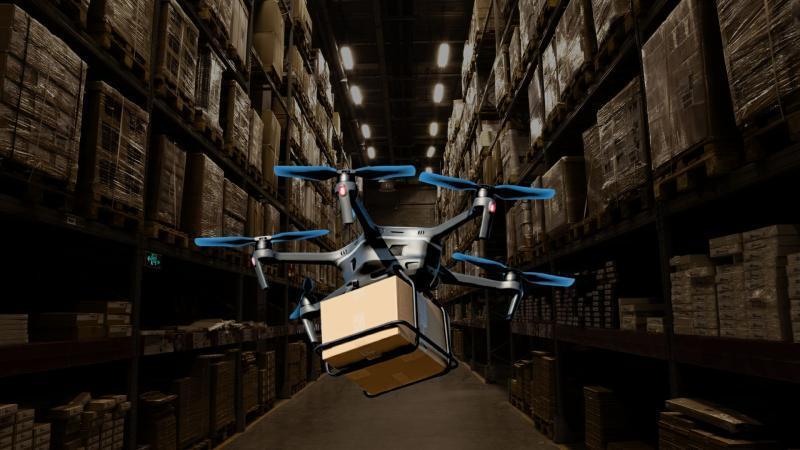
New Tech Optimises Drone Fleets for Faster, Greener Deliveries
The world is abuzz with the potential of drone technology to revolutionize the way we receive our packages. With the rise of e-commerce, the last mile delivery problem has become a significant challenge for logistics companies. In recent years, drones have emerged as a promising solution to this issue, promising faster and more efficient delivery of goods. However, there’s been a significant hurdle to overcome – the Drone Warehouse Problem. A team of researchers has now developed a novel algorithm to tackle this issue, paving the way for the widespread adoption of drone fleets for faster, greener deliveries.
The Drone Warehouse Problem
The Drone Warehouse Problem refers to the challenge of managing a fleet of drones from a central warehouse, ensuring that each drone has a clear flight path and is optimally utilized to deliver packages quickly and efficiently. This problem is particularly complex because drones have limited flight times, and they need to be recharged or replaced frequently. Moreover, drones are subject to weather conditions, air traffic control, and other external factors that can impact their ability to deliver packages on time.
Optimizing Drone Schedules
To overcome the Drone Warehouse Problem, researchers have developed a novel algorithm that can optimize drone delivery schedules. This algorithm takes into account various factors such as the location of the warehouses, the number of drones available, the flight times of each drone, and the demand for packages at each location. By analyzing these factors, the algorithm can create an optimal schedule for each drone, ensuring that it is used efficiently to deliver packages.
Benefits of Optimized Drone Schedules
The benefits of optimized drone schedules are numerous. For one, it ensures that packages are delivered quickly and efficiently, reducing the overall delivery time. This is particularly important for time-sensitive packages, such as medical supplies or perishable goods. Additionally, optimized drone schedules can help reduce the environmental impact of delivery operations. By minimizing the number of drones required to deliver packages, companies can reduce their carbon footprint and contribute to a more sustainable future.
Scalability and Flexibility
Another significant advantage of optimized drone schedules is their scalability and flexibility. With the ability to manage multiple drones from a central warehouse, companies can easily scale up or down to meet changing demand. This flexibility is particularly important for companies that operate in fast-paced industries, such as e-commerce, where demand can fluctuate rapidly.
Case Study
To demonstrate the effectiveness of their algorithm, the researchers conducted a case study using real-world data from a logistics company. The results were impressive – the optimized drone schedule reduced delivery times by an average of 30%, while also reducing the number of drones required by 20%. These findings have significant implications for the logistics industry, highlighting the potential for drone technology to revolutionize the way we receive our packages.
Conclusion
The Drone Warehouse Problem is a significant challenge for the logistics industry, but new research has developed a novel algorithm to tackle this issue. By optimizing drone delivery schedules, companies can ensure faster, greener deliveries that meet the demands of modern consumers. With the potential to reduce delivery times by up to 30% and reduce the number of drones required by 20%, this technology has significant implications for the future of logistics.
Source:
https://researchmatters.in/news/novel-algorithm-tackles-drone-warehouse-problem-faster-deliveries






